トドケル。京都 祇園祭
[vc_row][vc_column][vc_column_text]
We must adapt to the age of the Covid-19(coronavirus) .
What can we do now?
We want to deliver something to you.
[/vc_column_text][vc_column_text]
- TODOKERU。-
[/vc_column_text][vc_text_separator title=”TODOKERU。Kyoto Gion Festival” color=”mulled_wine”][/vc_column][/vc_row][vc_row][vc_column width=”1/3″][/vc_column][vc_column width=”1/3″ css=”.vc_custom_1591356663653{background-image: url(https://dresscloud.co/wp-content/uploads/2020/06/2014祇園祭前祭 山鉾巡行 長刀鉾縮小版 三宅徹撮影.jpg?id=13950) !important;background-position: center !important;background-repeat: no-repeat !important;background-size: cover !important;}”][cq_vc_hotspot image=”14198″ icontype=”icon” fonticon=”fa-map-marker,fa-map-marker,fa-map-marker,fa-map-marker,fa-map-marker,fa-map-marker,fa-map-marker,fa-map-marker,fa-map-marker,fa-map-marker,fa-map-marker,fa-map-marker,fa-map-marker,fa-map-marker,fa-map-marker,fa-map-marker” position=”65%|45%,30%|30%,12%|80%,38%|70%,45%|67%,55%|65%,50%|62%,54%|50%,60%|53%,63%|30%,68%|35%,75%|18%” iconbackground=”rgba(221,51,51,0.8)” circlecolor=”#ffffff”][hotspotitem]

京都 祇園祭
三大祭の一つとして知られる京都祇園祭。863年におこった疫病の流行を受け無病息災を祈念したことがその起源とされています。
[/hotspotitem][/cq_vc_hotspot][/vc_column][vc_column width=”1/3″][/vc_column][/vc_row][vc_row][vc_column width=”1/4″][/vc_column][vc_column width=”1/2″ css=”.vc_custom_1591663413260{background-position: center !important;background-repeat: no-repeat !important;background-size: cover !important;}”][vc_column_text]

長刀鉾の粽-ちまき- |
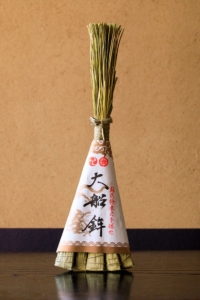
大船鉾の粽-ちまき- |
[/vc_column_text][/vc_column][vc_column width=”1/4″][/vc_column][/vc_row][vc_row][vc_column width=”1/4″][/vc_column][vc_column width=”1/2″][vc_btn title=”【トドケル。京都 祇園祭】公式ショップ” style=”outline” color=”purple” align=”center” link=”url:https%3A%2F%2Fdresscloud.co%2Fshop%2Fkimono-iki%2F||target:%20_blank|”][vc_column_text]
One of the big three festivals of Japan, Kyoto’s Gion Festival. The origin of this festival lies in the year 863 when a big plague was rapidly spreading, and as a way of praying for health and protection Gion festival was born.
The highlight of Gion festival, the Yamahoko (decorative parade float) parade of 2020 has unfortunately been cancelled due to the spread of the Covid-19.
Each neighborhood association in charge of running a Yamahoko float, sell a protective amulet called chimaki, specific to each Yamahoko. Chimaki has a deep connection with the people of Kyoto and is believed to bring good luck while warding off infectious diseases.
Through the 【Deliver. Kyoto Gion Festival】 project, we aim to deliver chimaki with the hope that Covid-19 is contained quickly and that everyone remains healthy. All proceeds will go towards helping each neighborhood maintain their respective
【必ずお読みください】
The packaging and sending of the【Deliver. Kyoto Gion Festival】chimaki is being done by the welfare office for disabled people, with the consent from the yamahoko neighborhood associations.
Furthermore, following last year’s problems with the large-scale reselling of chimaki, the mass purchasing of chimaki for reselling purposes has been forbidden by the yamahoko neighborhood associations.
We thank you for your understanding.
[/vc_column_text][vc_tta_accordion style=”flat” color=”mulled-wine” spacing=”1″ c_align=”center” c_icon=”” active_section=”” no_fill=”true” collapsible_all=”true”][vc_tta_section title=”トドケル。京都 祇園祭とは?” tab_id=”1588978401566-76c83848-4dc7″][vc_column_text]
【トドケル。プロジェクトとは?】
The【Deliver.】project was set up to support areas hit with natural disasters, and to help other societal issues, through multi-functional market places and online websites. It’s a platform where those needing support, and those offering support have a role and participate in.
【トドケル。京都 祇園祭とは?】
The【Deliver.】project was set up to support areas hit with natural disasters, and to help other societal issues, through multi-functional market places and online websites. It’s a platform where those needing support, and those offering support have a role and participate in.
【販売/発送について】
We are accepting orders of the Gion festival chimaki until the end of August.We will ship the product once the order has been processed.Delivery will take approximately 7 days after shipping.
[/vc_column_text][/vc_tta_section][/vc_tta_accordion][la_divider height=”lg:50px;”][vc_text_separator title=”トドケル。がお手伝いする山鉾” color=”mulled_wine”][cq_vc_cardslider autoslide=”8″ bgstyle=”customized” backgroundcolor=”#484152″ autoheight=”yes”][cq_vc_cardslider_item datecolor=”#ffffff” titlecolor=”#ffffff” image=”13964″ isresize=”” buttontext=”長刀鉾の商品ページ” buttoncolor=”purple”]
長刀鉾-なぎなたぼこ-
下京区四条通東洞院西入ル
Naginata-hoko
Of the 23 yamahoko, Naginata is the oldest yamahoko and leads the parade every year. At the front of Naginata (long spear) yamahoko is a big naginata and this float is the only one in which an actual child rides on (the rest utilise dolls)
[/cq_vc_cardslider_item][cq_vc_cardslider_item image=”13958″ isresize=”” buttontext=”大船鉾商品ページ” buttoncolor=”purple”]
大船鉾 -おおふなぼこ-
下京区新町通四条下ル
Ofuna hoko
Ofuna hoko is one of the oldest yamahoko and was build in the year 1441. It was burned down later and it was only revived in the year 2012.
[/cq_vc_cardslider_item][/cq_vc_cardslider][vc_column_text]
祇園祭Photo by 三宅徹
[/vc_column_text][la_instagram_feed enable_carousel=”yes” limit=”5″ scroll_speed=”1000″ column=”xlg:5;lg:5;md:5;sm:5;xs:5;mb:5;”][/vc_column][vc_column width=”1/4″][/vc_column][/vc_row][vc_row][vc_column width=”1/4″][/vc_column][vc_column width=”1/2″]
[/vc_column][vc_column width=”1/4″][/vc_column][/vc_row][vc_row][vc_column width=”1/4″][/vc_column][vc_column width=”1/2″][vc_text_separator title=”Project leader” color=”mulled_wine”][vc_column_text]Head of the Kyoto kimono Fashion association
Kimono culture researcher
Teruno Miyake
[/vc_column_text][cq_vc_avatarblock avatartype=”image” avatarimage=”13999″]
” I want to send the chimaki, carefully crafted with the wish that everyone remains healthy”
[/cq_vc_avatarblock][vc_toggle title=”コメント全文を読む” style=”round_outline” custom_font_container=”tag:h2|font_size:15|text_align:left” use_custom_heading=”true”]
Greetings
Born and raised in Kyoto, I have spent many years teaching kimono culture across the world. From the year 1983, I spent 20 years teaching kimono and Japanese dance, while listening to the traditional music of Gion festival. From 2003 to present, these 17 years I have been based on Shinmachi street outside the Houka hoko. Kyokimono Iki has walked beside the Kitakanon Yamahoko for many years. I didn’t deliberately choose to be located here, but I feel grateful for the protection of the Gods. Being located around the 3 of the Yamahoko means that I have been tasked to do the kimono dressing for over 60 parade members. The cancellation of this year’s parade is truly a sad event. I wondered if there was anything I could to do to be of use to Gion festival. I came to the conclusion that if the people cannot come to see Gion festival, then I should send a little bit of Gion festival to them. I also hope that despite this years festival being cancelled, many people come to next years festival and enjoy dressing up in Yukata. I would like to be able to send carefully hand crafted chimaki to as many people as possible.
This of course is only possible due to the help of many people.
[/vc_toggle][vc_toggle title=”Profile” style=”round_outline” custom_font_container=”tag:h2|font_size:15|text_align:left” use_custom_heading=”true”]
Born in Kyoto.
Involved in the kimono industry for around 50 years.
Head kimono dresser and stylist for many actresses.
At the request of the Department of International relations, held many kimono and Japanese culture events in many different countries since 1980.
In 1998, was awarded a price from the Department of International relations, acknowledging her skills.
Has focused on the development of new kimono stylists, and holds many lectures about kimono and Japanese traditional culture.
[/vc_toggle][/vc_column][vc_column width=”1/4″][/vc_column][/vc_row][vc_row][vc_column width=”1/4″][/vc_column][vc_column width=”1/2″][vc_text_separator title=”祇園祭を知ろう” color=”mulled_wine”][vc_column_text]
Kimono researcher, Teruno Miyake will explain all about Gion Festival. Let’s learn more about Gion Festival!
[/vc_column_text][vc_tta_accordion style=”modern” color=”mulled-wine” spacing=”1″ c_align=”center” c_icon=”” active_section=”” collapsible_all=”true”][vc_tta_section title=”祇園祭とは?” tab_id=”1588979160174-21536301-4063″][vc_column_text]
祇園祭りとは?
One of the big three festivals in Japan, Gion Festival is not just any ordinary festival. In the past, natural disasters and illness plagued the peaceful lives of the ordinary people. Exactly like the current Covid-19 pandemic.
It was thought to be the deeds of the spirits on the losing side of the various internal wars. The base of the current Gion festival is the old ‘Gion spirit gathering’ which was a ritual to appease the spirits. In the early Heian period, old Kyoto was suffering from a long lasting pandemic, and in the north east of the region there was an earthquake that made the ground tear open, the seas rage, and destroyed all of the rice crop. In response to this, the Shinsen-en temple formerly located in the imperial garden, held a big ‘Spirit gathering’ event. It is said that this event became the Gion festival.
The Gods contained in Yasaka shrine (the base shrine of the Gion festival) such as the major Susano no Mikoto, were passed around to portable shrines to the main street of Kyoto, and the houses of the nobility. When the Gods were transferred between the portable shrines, the people carrying the portable shrine currently containing the Gods would say ‘there, there, gently we go’ and the people carrying the portable shrine that was to receive the Gods would respond with ‘Come, welcome home!’, as a sign of greeting and paying respects to the Gods. It seems that Yamahoko (decorative parade floats) adorned with festive tags and a vibrant Japanese band were paraded around at the same time this was occurring. In the Onin war (1467-77) most of the Yamahoko were burned down. In the year 1500 in Post Onin war Kyoto, where there were few residents remaining, the structures of the Yamahoko finally started to be rebuilt, and these rebuilt Yamahoko are the ones used in the festivals today. With the rebuilding of the Yamahoko, the vibrant atmosphere of Kyoto started to come back and uplift the city of Kyoto. The cancellation of this year’s parade was a hard and sorrowful decision.
[/vc_column_text][/vc_tta_section][vc_tta_section title=”粽(ちまき)” tab_id=”1588979160361-a9c7a2ae-f307″][vc_column_text]
粽
Every year around the time of the Gion festival, in the yamahoko neighbourhoods,you can hear the voices of the cute children selling chimaki (protective amulets) with the cries of “how about a chimaki?”. This year those voices will not be heard.
In the first place, let’s discuss what chimaki are.
Many tourists get confused with the edible kind of chimaki (a glutinous rice dumpling). This is not an edible chiaki. When Susano no Mikoto, known for the legend of Yamata no Orochi, was looking for place to reside for the night during his journeys, he came across a poor inn owner called Sominshorai, who despite being poor offered him comfortable dwellings. Susano no Mikoto said to the inn owner “if illness spreads across the world, say ‘the descents of Sominshorai’ and wrap (maku) this rope of reeds (chi) to be exempt from the illness” and wrapped a bunch of reeds up. This eventually became the chimaki used in Gion festival. On each chimaki there is a talisman in which the name of the yamahoko and ‘descendent of Sominshorai’ written on it. The chimaki is to be hung in the entranceway of the house to ward off evil spirits.
This year we will send chimaki directly to your door, so please feel free to buy one and ward off Covid-19 or the flu from your household!
[/vc_column_text][/vc_tta_section][vc_tta_section title=”山鉾(やまぼこ)” tab_id=”1588979160275-bc0cc8e6-29ca”][vc_column_text]
長刀鉾 Naginata hook
The oldest of the 23 yamahoko, and always leads the parade. There is a big naginata (long spear) attached on the front to ward off, and it is the only float to have a real child on-board instead of a doll. This child is purified in the main building of the Yasaka shrine, and is ordained into the roll of being a representation of the Gods. Once the child has been ordained he cannot set foot on the ground, and rides on the yamahoko float with two guardians. At the time of the parade, this child has the roll of cutting the rope made of reeds signifying the boundary. Once this rope is cut, the parade officially has begun.
大船鉾 Ofuna hoko
This is a yamahoko in the shape of a big boat. On this yamahoko there is a Japanese band and physical representation of the Gods, started by Empress Jingu. In one theory, the history of this float reaches back to the year 1441 before the Onin war. This float is said to represent the Empress Jingu returning home after her trip to Korea. It plays the important roll of being the last float in the parade. Unfortunately, the float was burned down in the end of the Shogunate, and was missing from the Gion festival for 150 years before it was rebuilt. In 2014, the float was finally added back to the parade.
[/vc_column_text][/vc_tta_section][/vc_tta_accordion][/vc_column][vc_column width=”1/4″][/vc_column][/vc_row][vc_row][vc_column width=”1/4″][/vc_column][vc_column width=”1/2″][vc_text_separator title=”祇園祭からトドケル。” color=”mulled_wine”][vc_tta_accordion style=”modern” color=”mulled-wine” spacing=”1″ c_align=”center” c_icon=”” active_section=”” collapsible_all=”true”][vc_tta_section title=”祇園祭の粽(ちまき)” tab_id=”1588982678584-bb7c0656-295c”][vc_column_text]

長刀鉾の粽Naginata chimaki
The chimaki from the Naginata yamahoko are extremely popular and people from far away often come to purchase it. This chimaki sells out quickly every year. One could say that being able to purchase it through this sight is quite a lucky opportunity.
[/vc_column_text][vc_btn title=”長刀鉾の粽-ちまき-購入ページへ” style=”outline” color=”black” size=”sm” align=”center” link=”url:https%3A%2F%2Fdresscloud.co%2Fproduct%2F14241%2F%25E4%25BA%25AC%25E9%2583%25BD-%25E7%25A5%2587%25E5%259C%2592%25E7%25A5%25AD%25E3%2580%2590%25E9%2595%25B7%25E5%2588%2580%25E9%2589%25BE%25E3%2580%2591-%25E7%25B2%25BD-%25E3%2581%25A1%25E3%2581%25BE%25E3%2581%258D-%25E6%25B5%2581%25E8%25A1%258C%25E7%2597%2585%25E3%2581%25AE%25E3%2581%258A%25E5%25AE%2588%25E3%2582%258A%2F||target:%20_blank|”][la_divider height=”lg:50px;”][vc_column_text]

大船鉾の粽-ちまき-
大船鉾の粽 Ofuna hoko chimaki
Even if we say chimaki, we aren’t talking about the edible kind; we’re talking about the protective amulet kind that is hung in the doorways of buildings!
As the big focal point of the second parade, the chimaki from the Ofuna hoko is extremely popular. The chimaki often become sold out.
The writing of “descendants of Sominshorai” are words from the God enshrined in Yasaka shrine, Susano no Mikoto, to protect the holder of the chimaki.
[/vc_column_text][vc_btn title=”大船鉾の粽-ちまき-購入ページへ” style=”outline” color=”black” size=”sm” align=”center” link=”url:https%3A%2F%2Fdresscloud.co%2Fproduct%2F14060%2F%25E4%25BA%25AC%25E9%2583%25BD-%25E7%25A5%2587%25E5%259C%2592%25E7%25A5%25AD%25E3%2580%2590%25E5%25A4%25A7%25E8%2588%25B9%25E9%2589%25BE%25E3%2580%2591-%25E7%25B2%25BD-%25E3%2581%25A1%25E3%2581%25BE%25E3%2581%258D-%25E6%25B5%2581%25E8%25A1%258C%25E7%2597%2585%25E3%2581%25AE%25E3%2581%258A%25E5%25AE%2588%25E3%2582%258A%2F||target:%20_blank|”][/vc_tta_section][vc_tta_section title=”手拭い/扇子etc..” tab_id=”1588983522232-8bb05a8e-a6cb”][vc_column_text]大船鉾の手拭いは注染(ちゅうせん)という伝統的な手拭いの染色技法によって染められています。染料は布の下側に抜けるため、布の芯まで染まり、裏表なく柄が鮮やかで色褪せしにくいことが特徴です。[/vc_column_text][vc_column_text]
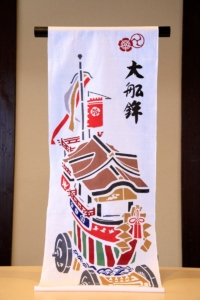
大船鉾の手拭い
[/vc_column_text][vc_btn title=”大船鉾の手拭い 購入ページへ” style=”outline” color=”black” size=”sm” align=”center” link=”url:https%3A%2F%2Fdresscloud.co%2Fproduct%2F14060%2F%25E4%25BA%25AC%25E9%2583%25BD-%25E7%25A5%2587%25E5%259C%2592%25E7%25A5%25AD%25E3%2580%2590%25E5%25A4%25A7%25E8%2588%25B9%25E9%2589%25BE%25E3%2580%2591-%25E7%25B2%25BD-%25E3%2581%25A1%25E3%2581%25BE%25E3%2581%258D-%25E6%25B5%2581%25E8%25A1%258C%25E7%2597%2585%25E3%2581%25AE%25E3%2581%258A%25E5%25AE%2588%25E3%2582%258A%2F||target:%20_blank|”][la_divider height=”lg:50px;”][vc_column_text]
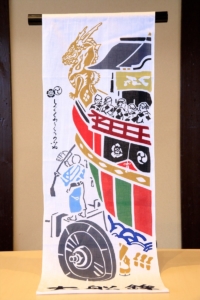
大船鉾の手拭い
[/vc_column_text][vc_btn title=”大船鉾の手拭い 購入ページへ” style=”outline” color=”black” size=”sm” align=”center” link=”url:https%3A%2F%2Fdresscloud.co%2Fproduct%2F14060%2F%25E4%25BA%25AC%25E9%2583%25BD-%25E7%25A5%2587%25E5%259C%2592%25E7%25A5%25AD%25E3%2580%2590%25E5%25A4%25A7%25E8%2588%25B9%25E9%2589%25BE%25E3%2580%2591-%25E7%25B2%25BD-%25E3%2581%25A1%25E3%2581%25BE%25E3%2581%258D-%25E6%25B5%2581%25E8%25A1%258C%25E7%2597%2585%25E3%2581%25AE%25E3%2581%258A%25E5%25AE%2588%25E3%2582%258A%2F||target:%20_blank|”][la_divider height=”lg:50px;”][vc_column_text]
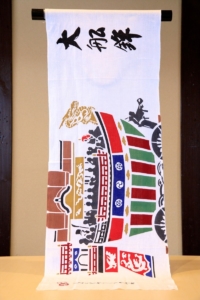
大船鉾の手拭い
[/vc_column_text][vc_btn title=”大船鉾の手拭い 購入ページへ” style=”outline” color=”black” size=”sm” align=”center” link=”url:https%3A%2F%2Fdresscloud.co%2Fproduct%2F14060%2F%25E4%25BA%25AC%25E9%2583%25BD-%25E7%25A5%2587%25E5%259C%2592%25E7%25A5%25AD%25E3%2580%2590%25E5%25A4%25A7%25E8%2588%25B9%25E9%2589%25BE%25E3%2580%2591-%25E7%25B2%25BD-%25E3%2581%25A1%25E3%2581%25BE%25E3%2581%258D-%25E6%25B5%2581%25E8%25A1%258C%25E7%2597%2585%25E3%2581%25AE%25E3%2581%258A%25E5%25AE%2588%25E3%2582%258A%2F||target:%20_blank|”][la_divider height=”lg:50px;”][vc_column_text]

大船鉾の御扇子(表)
tenugui (hand cloth) and fans
The tenugui of Ofuna hoko are dyed in a traditional method. Since the dye is removed from the underside of the cloth, the pigment thoroughly penetrates right into the cloth fibres. This also means that both sides of the cloth are just as vibrant and colourful!
[/vc_column_text][vc_column_text]
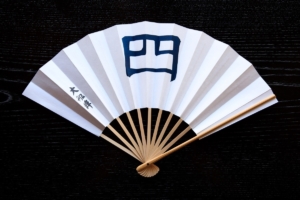
大船鉾の御扇子(裏)
[/vc_column_text][vc_btn title=”大船鉾の御扇子セット 購入ページへ” style=”outline” color=”black” size=”sm” align=”center” link=”url:https%3A%2F%2Fdresscloud.co%2Fproduct%2F14060%2F%25E4%25BA%25AC%25E9%2583%25BD-%25E7%25A5%2587%25E5%259C%2592%25E7%25A5%25AD%25E3%2580%2590%25E5%25A4%25A7%25E8%2588%25B9%25E9%2589%25BE%25E3%2580%2591-%25E7%25B2%25BD-%25E3%2581%25A1%25E3%2581%25BE%25E3%2581%258D-%25E6%25B5%2581%25E8%25A1%258C%25E7%2597%2585%25E3%2581%25AE%25E3%2581%258A%25E5%25AE%2588%25E3%2582%258A%2F||target:%20_blank|”][/vc_tta_section][/vc_tta_accordion][/vc_column][vc_column width=”1/4″][/vc_column][/vc_row]